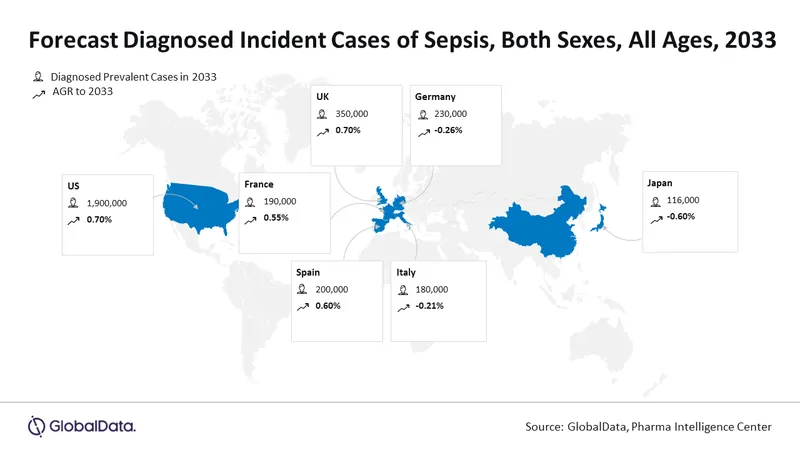
Alarming Rise in Type 1 Diabetes Cases: Projected 3.166 Million Diagnosed by 2033 Across Major Markets!
2024-11-19
Author: Ming
Introduction
A recent report from GlobalData, a renowned data and analytics firm, reveals concerning projections regarding the prevalence of diagnosed cases of type 1 diabetes (T1D) across the seven major markets (7MM). By 2033, the number of diagnosed T1D cases is anticipated to soar to 3.166 million, up from approximately 3.01 million in 2023, reflecting an annual growth rate of 0.50%.
Causes of Increase
This anticipated rise is significantly attributed to advancements in medical treatment, which have greatly improved the life expectancy of T1D patients. As a result of these developments, more individuals are able to manage their condition effectively, leading to longer lifespans and the potential transmission of diabetes-related genes to future generations.
Regional Disparities
Regional disparities in T1D prevalence are notable, with Western nations showing higher rates. The United States currently holds the highest number of diagnosed T1D cases, estimated at 1.77 million in 2023. In stark contrast, Japan ranks at the lower end of the spectrum with only 120,000 prevalent cases.
Expert Insights
Alia Rafiq, an epidemiologist at GlobalData, points out the significant advancements in T1D management over the years. She states, 'The improved management of T1D has resulted from innovations such as insulin pumps, which help mitigate severe complications like diabetic ketoacidosis. This enhancement in care allows patients to live longer, leading to an increase in diagnosed cases as genetic predispositions manifest in subsequent generations.'
Gender Disparity
The report also highlights a noteworthy gender disparity in T1D prevalence among the 7MM. In 2023, men constituted just over half of T1D cases. Interestingly, Japan deviates from this trend, as women accounted for 55% of the diagnosed cases in the same year.
Conclusion
Rafiq further explains the prevalence patterns, saying, 'Previous studies indicate that T1D incidence is generally higher in men in North America and Europe, while the opposite is observed in regions like Asia and Africa. This gender distinction, along with varying prevalence rates, underscores the need for tailored public health strategies for different demographics impacted by T1D.' As these revelations unfold, it becomes imperative for health organizations and policymakers to consider the implications of rising T1D cases and the nuances of gender and regional differences in their approach to diabetes management and prevention. Will our healthcare systems be prepared to tackle this growing challenge? Only time will tell!



 Brasil (PT)
Brasil (PT)
 Canada (EN)
Canada (EN)
 Chile (ES)
Chile (ES)
 España (ES)
España (ES)
 France (FR)
France (FR)
 Hong Kong (EN)
Hong Kong (EN)
 Italia (IT)
Italia (IT)
 日本 (JA)
日本 (JA)
 Magyarország (HU)
Magyarország (HU)
 Norge (NO)
Norge (NO)
 Polska (PL)
Polska (PL)
 Schweiz (DE)
Schweiz (DE)
 Singapore (EN)
Singapore (EN)
 Sverige (SV)
Sverige (SV)
 Suomi (FI)
Suomi (FI)
 Türkiye (TR)
Türkiye (TR)